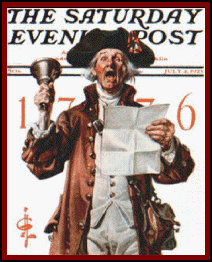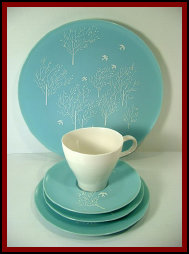












Thank you for your continued support and readership. Please insure to forward this Newsletter to your friends and neighbors. If you no longer wish to receive our emails regarding the update of this page, please send us an email to info@nova-antiques.com with the subject line "OPT OUT"
NOVA-Antiques.com does not run, manage or operate any of the flea markets, auction houses or estate sale companies advertised on this page. The NOVA-Antiques Newsletter is published for the exclusive use, enjoyment and convenience of our readers and subscribers. Any questions regarding the flea markets, auction houses and estate sale companies should be directed to the appropriate owner, promoter or manager.
© All rights reserved. Do not copy or duplicate without the expressed written permission of Northern Virginia Antiques & Collectibles.










Upcoming Antique Shows & Flea Markets
NOVA-Antiques.com provides the most comprehensive antiques show and flea market calendar
for the Mid Atlantic region.
Click here to view the most current antiques and collectibles shows calendar . . . > > >
Click here to view our flea
market directory and review pages . . . > > >
Mikey is a pretty shady junk dealer as we all know and tries to get something for nothing whenever he can. One day an elderly woman invited him to her home to look at some things that she had for sale. The elderly woman invites him
into the home and offers him some tea. Mikey accepts and she goes into the kitchen to prepare it. In the meantime, Mikey
starts looking around the apartment and soon spots a beautiful Royal Doulton bowl full of almonds sitting on a table. Mikey’s
mind began to race, thinking about how he could get that bowl as cheap as possible from the elderly woman.




When the elderly woman returns, Mikey asks if he can have an almond and she says “of course, have as many as you like.” Mikey
proceeds to eat many of the almonds, making small talk with the elderly woman while thinking of ways to approach her with a few dollars
for the bowl. Finally as an ice breaker he looks at his watch and says, “Oh my, look at the time, I must be going soon and I
ate almost all of you almonds, I must replace them for you.” To which the elderly woman replies, “Oh don’t bother sonny, ever
since I my teeth its all I can do just to lick the chocolate off of them.”
Russel Wright Mid-Century Modern Designer
Do you remember your mother or grandmother having those hard plastic plates and dinnerware
in their home when you were kid? Chances are they were designed by Russel Wright. Did your parents or grandparents
own a blond wood colored bedroom set in their home? Chances are it was designed by Russel Wright. You see Mr. Wright was
to the mid-20th Century, what Martha Stewart is to us today. Not only was he a brilliant designer but he was an even more brilliant
marketing guru who knew what the masses wanted. And what the masses wanted was inexpensive dinnerware, furniture, appliances
and much more.



Russel Wright was born in April 3, 1904 and briefly attended Princeton University and later Columbia University. His career
began as a stage designer and later in the 1930’s he started a business designing aluminum cocktail shakers and other accessories
for the home that included flatware, mugs and lamps. His designing career took off in the mid-30s and he started designing bleach
blond furniture for Heywood-Wakefield and the Conant Ball Company in Massachusetts. The late 30’s and early 40s saw the design
of ceramic dinnerware made by Steubenville Pottery, the hard plastic Melmac dinnerware was not a hit until the mid-50’s and 60’s.
However Mr. Wright did not just design things and had them produced by the best manufacturers, much like Martha Stewart and others
today, he had the presence of mind to market them and sell them through some of the better stores. His Art Deco furniture designs,
called Modern Living, produced by Heywood-Wakefield were sold by Macy’s. His furniture designs, called American Modern, produced
by Conant Ball were sold by Bloomingdales. By the late 40’s he had sold more than 80 million pieces of his dinnerware and Russel
Wright was a household name. So as you can see, chances are that some of his designs made it into either you parents’ or grandparents’
home.
Where You Might Find Melmac This Month . . . .
Pittsburgh’s Hidden Treasures, an Antiques Appraisal Show is back. The Senator John
Heinz History Center and KDKA-TV encourage Pittsburghers to bring their collectibles to the History Center on Sunday, August 2, 2009
to meet with professional appraisers from a variety of disciplines, including: Militaria, Sports and presidential memorabilia, Antique
coins and jewelry, furniture and household items, silver, vases, Books and documents , American and European art, Textiles and Classic
Toys
Melmac is made from a substance called Melamine Resin but many refer to it as just Melamine, which is a hard
plastic material. Russel Wright designed dinnerware made of this substance in the mid-1950s. Named the Residential pattern,
this dinnerware was first produced by the Northern Plastic Company of Boston and it was so popular that is was later produced by Home
Decorators of Newark. Vintage Melmac dinnerware designed by Wright comes in many bold colors and Art Deco lines and patterns. His designs won many awards at the time, but he was not the only designer of Melmac dinnerware.
Having its origins in Germany, British and U.S. designers adopted the use of Melamine after World War II and soon there were hundreds
of designers and manufacturers with their own line of Melmac dinnerware. The Branchell Company, Pro Lon Ware, Texas Ware, Boonton,
Arrowhead and Brookpark are just a few of the manufacturers producing Melmac dinnerware, so the good news is that if you are a vintage Melmac
collector, there are many items on the market to collect and most items cost less than $10. Modern designers that love to spruce
up kitchens with the bright and bold color find Melmac just right for the job.
Recent Auction of Fine Prints & Lithographs
Charles G. Martignette was an art collector and investor from Hallandale, Florida. He collected everything from pin-ups to fine prints and vintage lithographs and his collection included items from such premier artists
as J.C. Leyendecker, Norman Rockwell and W. Herbert Dutton. He amassed such a huge collection of magazine and book illustrations
that it reportedly took three large trucks to carry it all to auction after his death.
On July 15, 2009, some 311 works from Mr. Martignette’s estate sold at Heritage Auction Galleries of Dallas, Texas for more than $3.1
million, which was a drop in the bucket considering that his estate has more than 4300 pieces of art. The auction which took
more than seven hours to complete because of all the interest, is the first of several planned by the auction house to liquidate the
estate.
Vintage Collectible Ink Bottles
Since ancient times, people and cultures have been using ink for the purpose of writing, drawing and
coloring. Some inks can be traced as far back at the 12th Century BC in China, and India ink dates back as far as the 4th Century
BC. Most inks like India ink and other ink recipes were named for the place where we first found them used, such as Greek ink,
Roman ink and Egyptian ink. With so much writing and so much ink coming from different places, of course someone had to come
up with a vessel to store in, hence an ink bottle.
Glass ink bottles have been around since 1600’s and have come in many different shapes, sizes and colors; making vintage ink bottle
collecting both interesting and fun. Vintage ink bottle shapes include the teapot, pyramid, figural and turtle shapes, but the
most common shape is the cone shape. Clear glass and aqua colored ink bottles are the most common and easiest to find and subsequently
worth the least amount of money. Vintage ink bottles in yellow, purple or black glass are harder to find and therefore more
valuable to the ink bottle collector.
Like most antiques and collectibles, the more original and clean the ink bottle is, the more
valuable it becomes. Unfortunately, glass bottles of any kind have a tendency to stain because of water or moisture and cleaning
them is not an easy task. Some people use a soft brush; others use Efferdent and some use harsher chemicals to clean the vintage
bottles, but in most cases these measures are not enough. Collectors sometimes take vintage and antique bottles to a professional
for cleaning. Professional cleaners use machines that tumble the bottles in a mixture of solvent and copper shot or pieces of
copper wire.